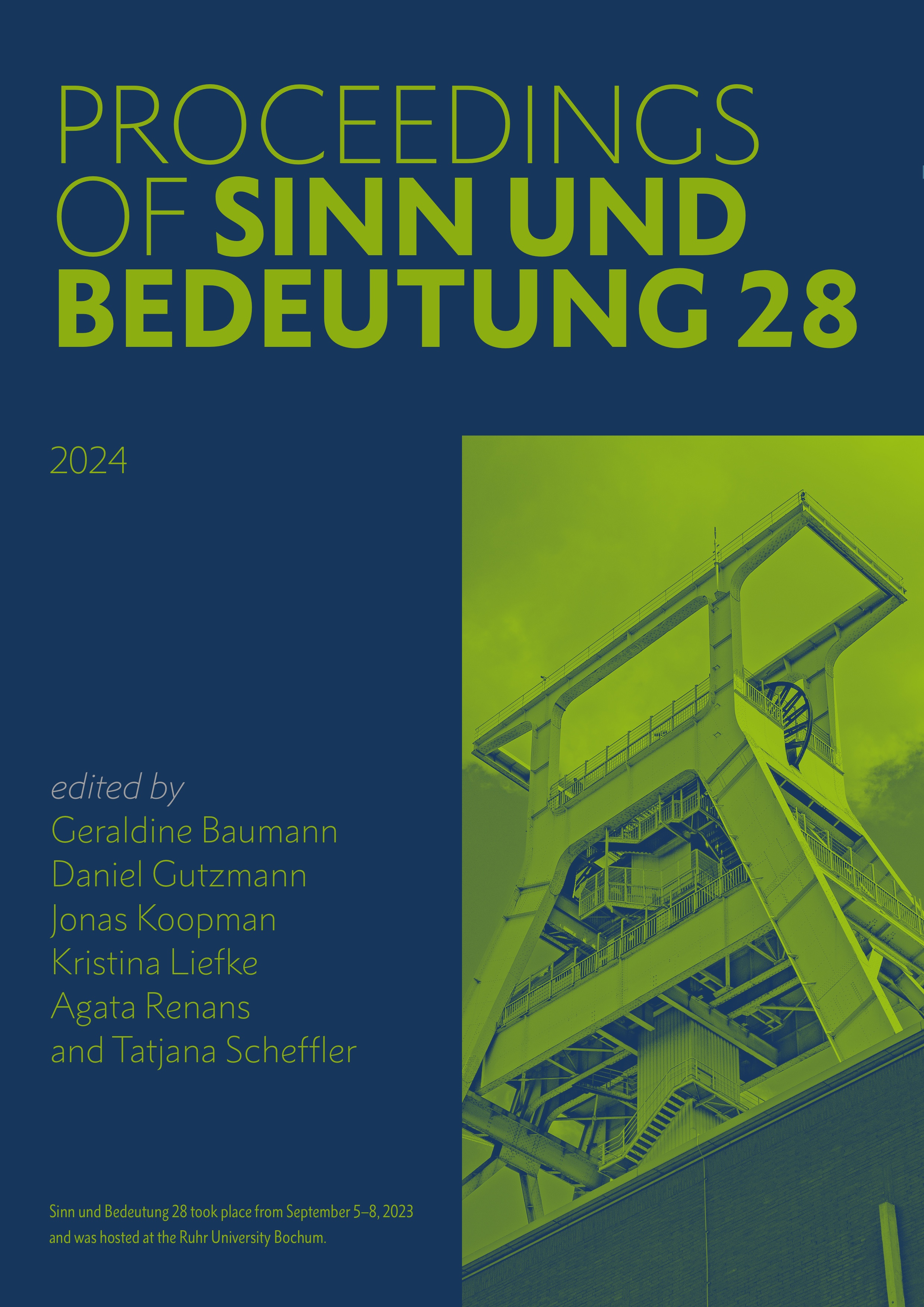Cardinality and (in)definiteness
DOI:
https://doi.org/10.18148/sub/2024.v28.1159Abstract
In every language, numeral constructions (NCs) consistently exhibit a pattern of strong indefiniteness. Although they can also appear with an overt definite determiner, achieving definiteness in NCs in languages without articles typically necessitates the use of alternative markers, such as demonstratives (Jiang, 2012). This contrasts with bare nouns, which can freely take on definiteness in articleless languages, often attributed to a covert 'iota' operator in the neo-Carlsonian approach. The prevailing view considers NCs to be predicative expressions of type ⟨e,t⟩, undergoing ∃ type-shifting in argument positions without overt determiners. Yet, it is unclear why the covert iota does not similarly apply to NCs in articleless languages, given their compatibility with the definite determiner in languages with articles. Taking up this puzzle, this study proposes that NCs primarily function as argumental expressions of type e, with their indefiniteness (via a choice function) stemming from a cardinal head residing within their structure. The proposal is grounded in an analysis of NCs in Turkish, an articleless language with an optional classifier, tane, and reinforced by data from Farsi.Downloads
Published
2024-12-20
How to Cite
Sağ, Y. (2024). Cardinality and (in)definiteness. Proceedings of Sinn Und Bedeutung, 28, 756–774. https://doi.org/10.18148/sub/2024.v28.1159
Issue
Section
Articles
License
Copyright (c) 2024 Yağmur Sağ

This work is licensed under a Creative Commons Attribution 4.0 International License.
https://creativecommons.org/licenses/by/4.0/
